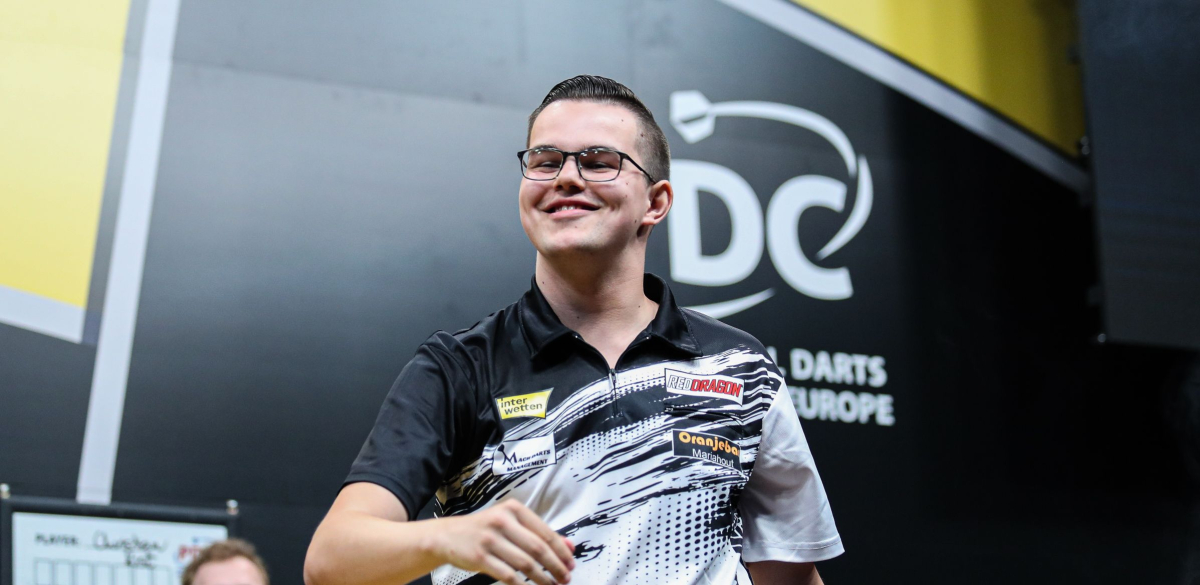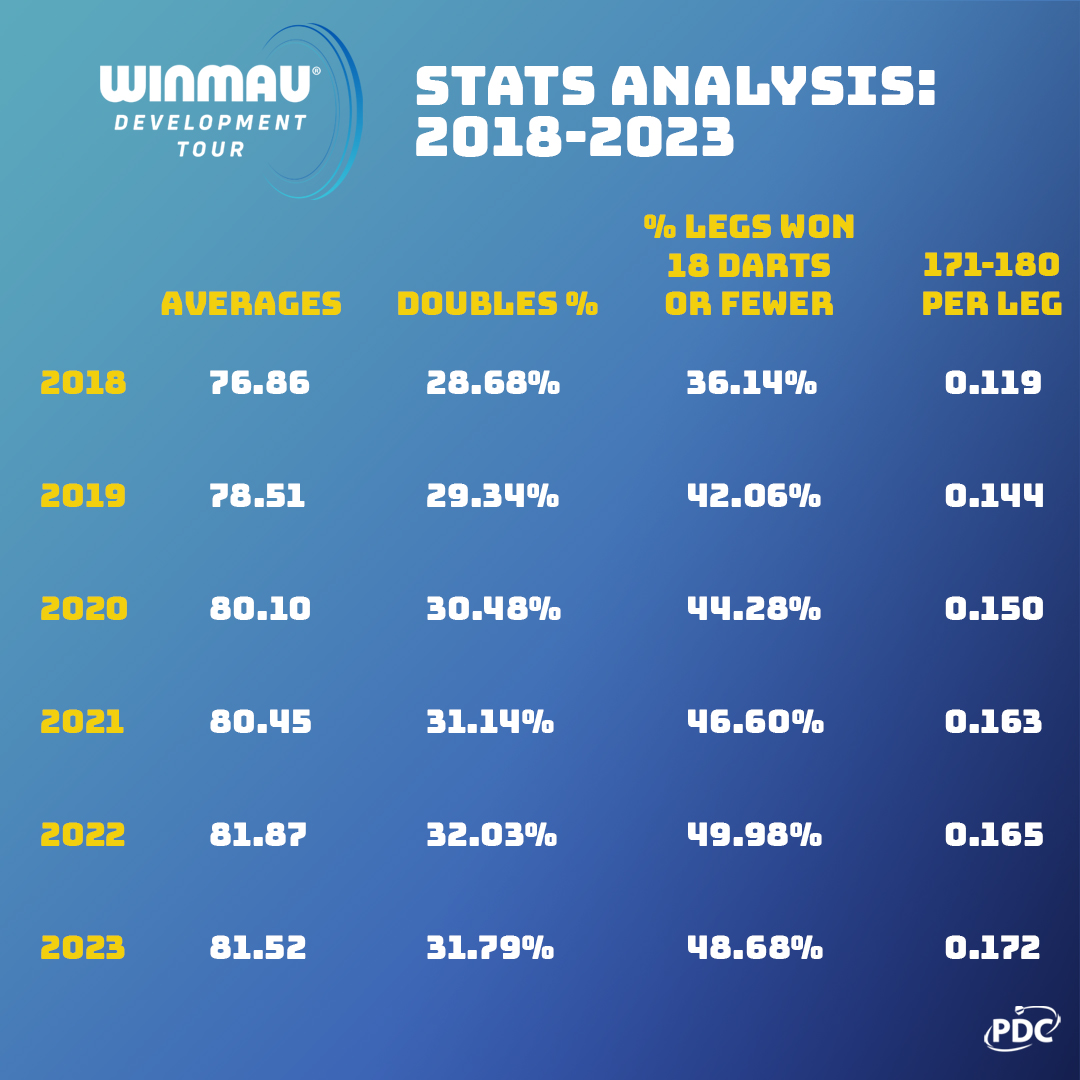
PDC stats analyst Christopher Kempf examines how much young players improve on average over the years through the Winmau Development Tour...
Making forecasts about the future trajectory of a young player's career is a perilous endeavour.
Innumerable examples exist of talented young players with tremendous scoring power and breakthrough wins against a titan of the game, who nonetheless faded into obscurity despite their best efforts.
The example of Michael van Gerwen (TV champion at 17, World Champion at 24, great wealth and fame thereafter) is the one all young players attempt to emulate, but to date no one has done so.
The basic question underlying this phenomenon is this: to what extent is a great darts player born or made?

So many opportunities for competition and training exist in the present day for young players that we can begin to address this question with more than mere conjecture.
Any young player with talent and aptitude for the game can participate in numerous youth leagues and training academies with considerable financial support.
A prudent early investment in a player's game can also pay dividends for sponsors, managers and professional governing bodies, so it can be said in 2023 that future stars have no lack of opportunity to develop their skills, should they choose to do so.
Thus, if it is true that any player can reach any performance level with practice, we should see continuous improvement reflected in the averages and scoring power of young players from year to year.
Thanks to DartConnect's partnership with the PDC and its support of the Development Tour - the world's premier circuit for youth competition in darts - we can track the performance of players over the years as they evolve from debutant teenagers to adult professionals.
We have no way of evaluating the youth tour standard of Michael Smith, Michael van Gerwen and their contemporaries: visit-by-visit tracking of Development Tour statistics began in 2018.
However, we can now compare the relative abilities of players across six early years of their careers and see whether players remain tethered to a standard dictated by their innate ability.
Let us take into consideration a data set of 26 players, all born between 1999 and 2002, who contested at least one Development Tour event between 2018 and 2023 inclusive.
The oldest of these players will no longer be eligible to play on this tour in 2024; the youngest made their debut as a youth player at the age of 16.
This group includes current and future PDC Tour Card Holders such as Bradley Brooks and Keane Barry, as well as lesser-known players who still aspire to play at that level.
In combination, we can track their averages, doubles and scoring from year to year to see if practice and coaching are paying dividends.
The 26 players averaged a combined 76.86 in 2018, when most were making their debuts on the circuit as teenagers.
For each successive year until the end of 2022, that figure improved by approximately 1.25 points per visit per year, reaching a high of 81.87 in 2022.
But in 2023, that number suddenly declined to 81.52. A similar trajectory exists for most other stats, with a steady increase in the first five years (e.g. from a doubles percentage of 28.7 in 2018 to 32.0 in 2022) followed by a sudden decline (to 31.8% doubles) in 2023.
Only in 180s per leg did that increase continue: the 22-24 year old players increased their output of maximums every year and now throw 40% more maximums than they did as 16-18 year olds.
No satisfactory explanation can by offered for why the players' standard suddenly declined after five years of steady increases.
Further data will be needed to confirm a levelling-off as players approach their mid-20s, or discard it as a statistical aberration.
But, the prevailing trend offers strong evidence that players who have access to all possible developmental opportunities in their youth, can improve their skills.
The difference between the beginning 77 average and the ending 82 average is a significant one, equivalent to winning legs in 1.1 fewer darts through practice and competitive experience.
While the overall trajectory for young players may be a steady, smooth increase, for individual players it is anything but.
Justin van Tergouw, a vaunted young star in his teenage years, was World Youth Champion in the BDO and averaged 87.10 in 2018 as a 17-year-old, but has never averaged more than 80 in any of the past four years.
Former UK Open semi-finalist Keane Barry recorded a 92 average in 2020 and a yearly average of 87 in 2023, but has otherwise seen his averages remain completely flat from ages 16 to 22.
The great success story of the Development Tour is in fact the most recent runner up on the Pro Tour, Gian van Veen.
Van Veen has improved so rapidly that no one in 2018, observing a 17-year old player throwing 3 171-180 scores for every 100 legs played and winning 6% of his legs in 18 darts or fewer, could have imagined that he would evolve into a player throwing 31 maximums and winning 72% by age 21.
Therefore, while a certain amount of improvement can be expected from young players on average, knowing whether a player will fulfill their early promise remains impossible to forecast.
A more thorough understanding of the physiological conditions underlying a player's 'talent' would be needed to assess the extent to which a certain level of performance is inherent to a player, immutable by training or temperament.
Numbers from DartConnect can point us to universal trends, but they can never reveal the inner complexities of the players.
There is no reason to suspect that just as Michael van Gerwen emerged as a superstar after years of struggles and losses on the Pro Tour, so too a struggling player might suddenly explode into view as a fearsome competitor.
The uncertainty can in fact offer encouragement. Even in the midst of temporary struggles with finding form or finding one's way in the world as a young person, with practice, motivation and training, one can expect to become a better version of oneself.